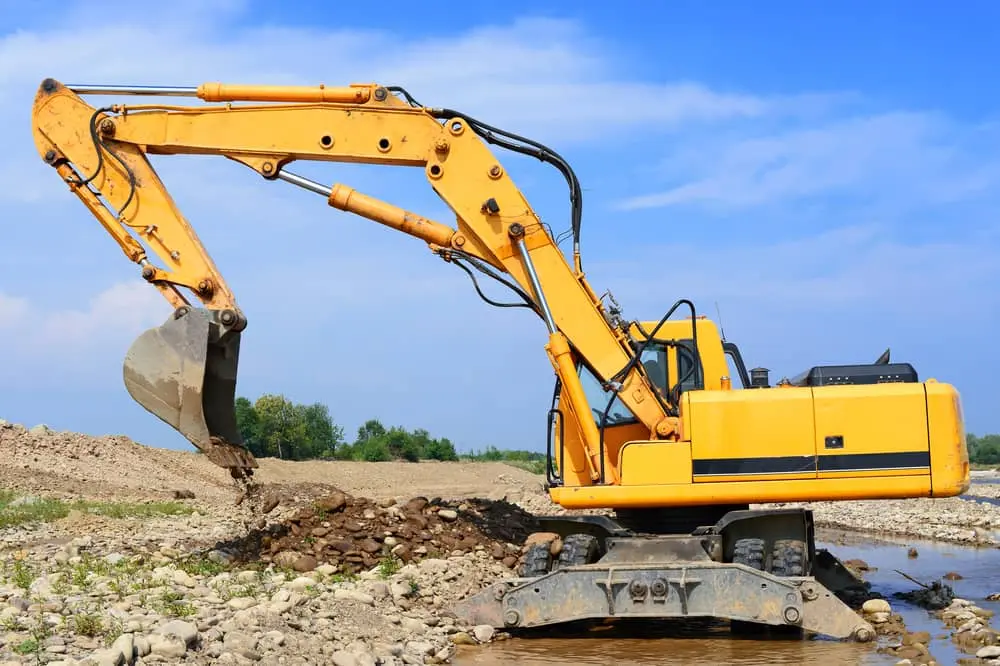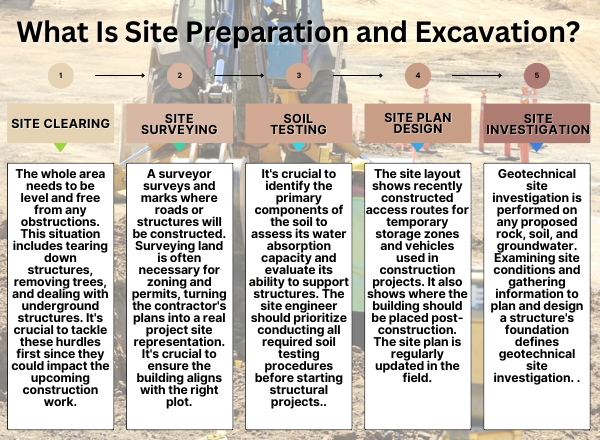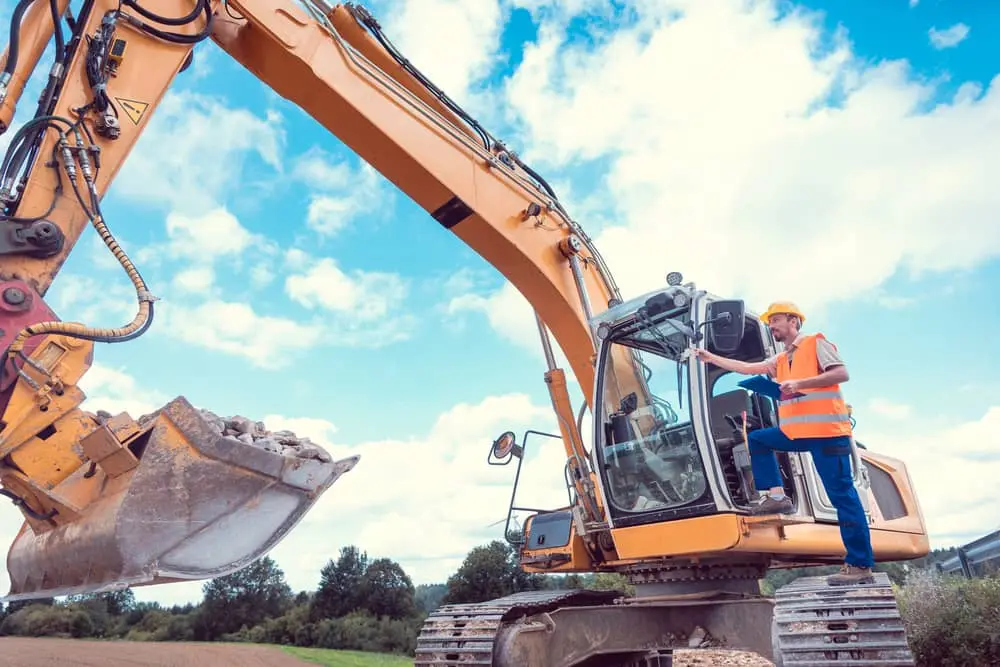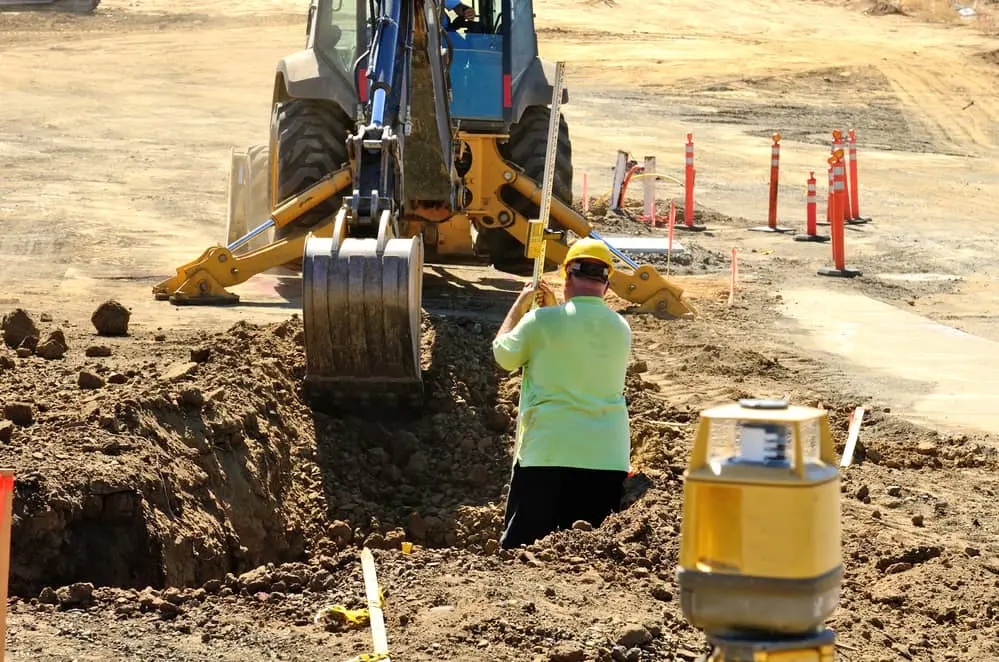When it comes to residential, industrial, or commercial construction, the initial step involves clearing the land. Various earthmoving machines play a role here. These machines can clear, flatten, and remove soil, creating a smooth surface for constructing foundations. But what is earthmoving in construction?
If you’re preparing for a construction venture, it’s crucial to understand earthmoving equipment and the earthmoving process. This knowledge is essential before deciding on the project’s commencement. A building’s stability primarily hinges on its foundation, so ensuring accuracy is vital.
What Is Earthmoving in Construction?
When we talk about earthmoving, it involves using big machines to shift a lot of dirt, often to dig the base of structures. Employees transport and handle sizable amounts of soil and different materials to and from places where buildings are made as part of their work.

Earthmoving machinery might be needed to clear debris, trees, plants, and obstacles in the designated zone. It can also be employed to excavate foundations or ditches, mine operations, and grade.
Earthmoving equipment is also essential for preparing land for residential construction and civil projects, including roads, drains, bridges, overpasses, car parking, etc. Earthmoving apparatus is the cornerstone of all infrastructure and building projects.
You’ll find many earthmoving machines at significant mining and quarry sites, ranging from small and agile gear for cramped spots to large-scale machinery. Depending on the equipment type, they’ll be transported using either steel or rubber tracks or commercial-grade tires.
Many earthmoving machines are designed for specific tasks. Some are made to dig and shift dirt and soil, while others are crafted to transport, compact, and more. Certain machines are suitable for grading, constructing slopes, and making trenches and additional cuts in the ground. There is also more adaptable equipment capable of performing a variety of functions.
What Equipment Is Used for Earthmoving?
There are many different types of earth-moving equipment, each designed for a specific purpose.
The most common types of earth-moving equipment are:

Excavators
One of the most common and essential equipment on any building site, the excavator does exactly what it says. The primary purpose is to remove soil and rocks from one location before dumping them into another. The vehicle consists of six main parts: tracks/wheels, a cab, a boom, a stick, a hydraulic arm, and an attachment, often a metal excavator bucket or scoop.
The machine can move forwards and backward on the tracks or wheels when necessary to reposition, while the main body can spin on a 360-degree axis. This allows the operator to dig and deposit in all directions, increasing efficiency.
However, the excavator can also carry out several other tasks on the building site, including mixing materials, cleaning up the site, laying pipes, demolition, landscaping, battering, benching, trench digging, loading, lifting, drilling holes with an Auger, cutting, boxing, breaking rocks, and more.
Wheel Loader
Moving heavy materials from one place to another on a construction site is invaluable and essential. This is where the wheel loader comes into play. Fitted with a huge front bucket or scoop, the wheel loader can transport masses of dirt, rocks, or other materials from A to B.
It can also load this same material into another vehicle for further transportation. The wheel loader comprises four large wheels, a cab, booms, a hydraulic arm, and a large metal bucket. The same vehicle can also be adapted for different jobs by removing the bucket attachment and fitting something new, such as a drill, rippers, or scarifiers.
Other uses of the wheel loader include cleaning up the site, backfilling, cutting and boxing, stockpiling, material mixing, lifting, hole drilling, and stripping soil.
Backhoe Loaders
While we have looked at machines that excavate and machines that load already, the backhoe loader is a jack of all trades. It is fitted with a bucket at the front for loading and a rear-mounted bucket for excavation. Like the other machines, the backhoe loader can also have its buckets and loaders removed instead of additional attachments.

The vehicle comprises four wheels, legs for stabilizing, a cab, a front-mounted bucket, a rear-mounted bucket, a boom, and a stick. The backhoe can also be used for loading, material mixing, landscaping, battering, benching, cutting and boxing, backfilling, lifting, trenching, breaking rocks, and more.
Bulldozers
Bulldozers are considered one of the construction industry’s strongest and most reliable heavy equipment. A bulldozer is an extremely heavy and powerful machine that moves dirt along large open tracts of land. Bulldozers have a broad, flat blade at the front, maneuvered by two hydraulic pistons, allowing movement within a restricted range of depths and angles for various tasks and applications.
Bulldozers are typically utilized to move mounds of soil and for coarse or precise leveling, influenced by the bulldozer’s size. A bulldozer’s considerable weight helps to crush sizable boulders, among various tasks.
Skid-Steer Loaders
The skid steer loader is by far the smallest, most nimble, and most versatile piece of machinery on this list. Hence, it is ideal for jobs in tighter spaces, such as private property works or smaller urban construction sites.
The reason the skid steer loader is so versatile is that the front attachment can be switched out for a wide array of options, such as a 4 in 1 Bucket, rotary hoe, dozer blade, hammer, drill, chain trench digger, GP bucket, pallet forks, and much more.
This vehicle can be used for the following: breaking rocks, cleaning up the site, material mixing, loading, excavating, battering, benching, stripping soil, loading, and much more.
Motor Graders
Motor graders are heavy equipment for fine grading and moving small amounts of dirt. They include a long blade that can be adjusted to meet specific angles to create a flat surface. They can also be equipped with a second blade in front of the front axle and, in certain instances, can be used for underground mining.
Motor graders are normally used to fine-grade gravel or dirt roads or to prepare the road base course before placing asphalt. Graders can also create sloped surfaces or drainage ditches with shallow V-shaped cross-sections.
Crawler Loaders
A crawler loader combines the features of an excavator with those of a backhoe or bucket loader. Thanks to its tracks, it boasts outstanding stability and its adaptable bucket proves handy for shifting soil and debris and loading materials onto trucks.
Crawler loaders are used in excavations for somewhat modest projects. Larger-scale tasks often opt for a hydraulic excavator instead of a crawler loader.
Trenchers
As the name suggests, a trencher is employed for digging trenches, typically narrow ones for piping and cabling. Trenchers vary in types and sizes, ranging from compact walk-behind models to sizable trenching machines capable of cutting into asphalt pavement and other tough surfaces.

The trencher features a conveyor system transporting the excavated material, depositing it beside the trench. Trenchers utilize different digging tools based on the trench’s depth and the material being excavated.
Scrapers
A scraper can move aggregates and dirt quickly around a construction site and is primarily used for leveling and digging large land areas. Scrapers are heavy large equipment designed for open areas, allowing them to move quickly during cutting and filling tasks.
Large self-propelled scrapers are known as motor scrapers. There are also smaller scrapers, known as pull scrapers, that are pulled behind another vehicle.
Common Dump Trucks
Dump trucks are required on almost every large job site. They offer limited functions but perform the all-important task of dumping and moving many types of heavy material. They’re also road-ready, so they can bring material into or out of the site and travel anywhere large equipment is permitted.
Dump trucks vary in size to meet diverse capacities and load requirements, from compact utility trucks with dump beds to massive machines employed in mining activities.
What Projects Involve Earthmoving?
Earthmoving equipment is often used on projects that involve land preparation or foundation laying, often at the very start of a much larger job.
However, earthmoving equipment may also be used on projects, including mining and aggregate quarries, building bridges and tunnels, site clearance, reservoir and dam construction, road and railway building, municipal buildings, and laying sewers and underground pipe networks.
Do you need experts who can help you with earthmoving for construction, get in touch with our experts here at Shilling Excavation!





